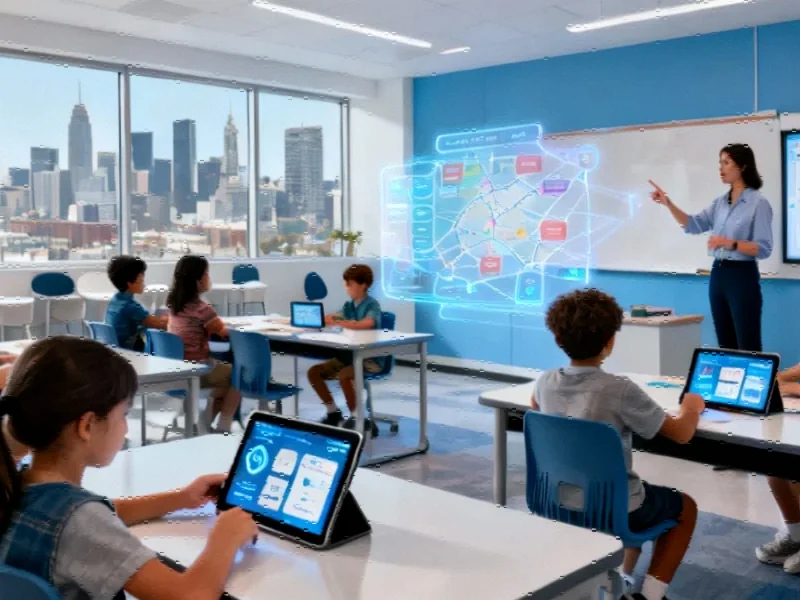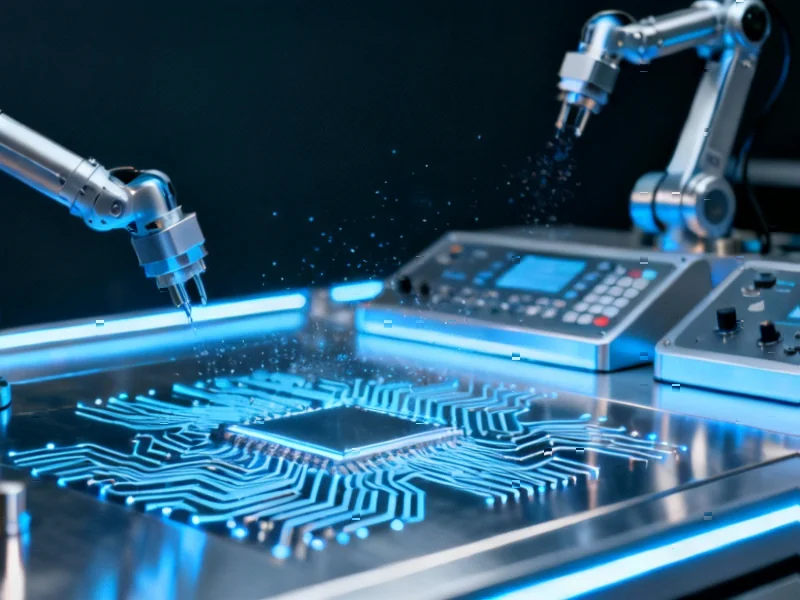The Shift from Coding to Critical Analysis
In today’s rapidly evolving technological landscape, high school STEM education is undergoing a fundamental transformation. Where once computer programming was considered the golden ticket to career success, students and educators are now recognizing that artificial intelligence is changing what skills will be valuable in tomorrow’s workforce. This shift represents a move from pure technical execution toward more analytical, interpretive capabilities that complement rather than compete with AI systems.
Benjamin Rubenstein, an assistant principal at Manhattan Village Academy in New York with two decades of classroom experience, observes this transition firsthand. “There’s a move from taking as much computer science as you can to now trying to get in as many statistics courses as possible,” he notes. His students increasingly view data literacy as more practical than pure programming skills, reflecting broader high school STEM education shifts occurring across the educational landscape.
The Data Literacy Imperative
The numbers tell a compelling story. Advanced Placement Statistics recorded 264,262 exam registrations in 2024, making it one of the most-requested AP tests according to Education Week. While computer science exams still draw significant numbers—175,261 students took AP Computer Science Principles and 98,136 took AP Computer Science A—the trend is clear: data literacy now sits alongside coding as an essential skill, not beneath it.
This educational evolution mirrors broader industry developments where the ability to interpret and analyze complex information is becoming increasingly valuable. Universities are already noticing the change, with the Computing Research Association reporting that computer science, computer engineering, and information degrees awarded in the US and Canada fell by approximately 5.5% in the 2023-2024 academic year after years of growth.
Practical Applications in Modern Classrooms
Forward-thinking educators like Rubenstein are redesigning curricula to reflect these changing priorities. While he still requires every student to take computer science before graduation “so they can understand what’s going on behind the scenes,” his school’s mathematics department now emphasizes practical application through courses like Applied Mathematics, where students analyze New York Police Department data to propose policy changes.
This approach extends to innovative courses like Ethnomathematics, which connects mathematical concepts to culture and identity. “We don’t want math to feel disconnected from real life,” Rubenstein explains. This pedagogical shift represents a significant departure from traditional STEM education models and aligns with related innovations in how we approach technical education across sectors.
Beyond the Keyboard: The New STEM Skillset
The transformation in STEM education reflects a fundamental recalibration of what skills will remain uniquely human in an AI-dominated future. As artificial intelligence systems become increasingly capable at generating code, the value proposition for human programmers evolves. Students are now focusing on developing capabilities in areas where AI still struggles—critical thinking, ethical reasoning, contextual understanding, and creative problem-solving.
This educational pivot connects to recent technology trends that emphasize human-AI collaboration rather than competition. The most successful future professionals will likely be those who can leverage AI tools while bringing distinctly human perspectives to complex challenges. This balanced approach represents the new frontier in STEM education, preparing students for careers that may not even exist today.
Industry Implications and Future Directions
The repercussions of this educational shift extend far beyond classroom walls. As high school students increasingly gravitate toward data analysis and interpretation skills, industries must adapt their hiring practices and workforce development strategies. The traditional “STEM pipeline” that Rubenstein references has indeed morphed into a network of branching paths, each requiring different combinations of technical and analytical capabilities.
This evolution in educational priorities reflects market trends across multiple sectors where data-driven decision making is becoming central to organizational success. Companies that understand these shifts and adapt their talent acquisition strategies accordingly will be better positioned to thrive in the coming decades.
Looking forward, the integration of emerging fields like quantum computing may further reshape STEM education. As new research reshapes our understanding of various scientific domains, educators will need to maintain this adaptive approach to curriculum development, ensuring students develop both the technical foundations and cognitive flexibility needed to navigate an uncertain technological future.
Preparing for an AI-Augmented World
The most successful educational institutions are those embracing this transition holistically, recognizing that the goal is not to abandon technical skills but to recontextualize them within a broader framework of human intelligence. Computer science remains important, but it’s increasingly being taught as a foundation for higher-order thinking rather than an end in itself.
This balanced approach—combining technical proficiency with analytical depth—represents the future of STEM education. As artificial intelligence continues to transform the workplace, the students who thrive will be those equipped not just to use technology, but to understand its limitations, guide its development, and apply its capabilities to solve meaningful human problems.
This article aggregates information from publicly available sources. All trademarks and copyrights belong to their respective owners.
Note: Featured image is for illustrative purposes only and does not represent any specific product, service, or entity mentioned in this article.



